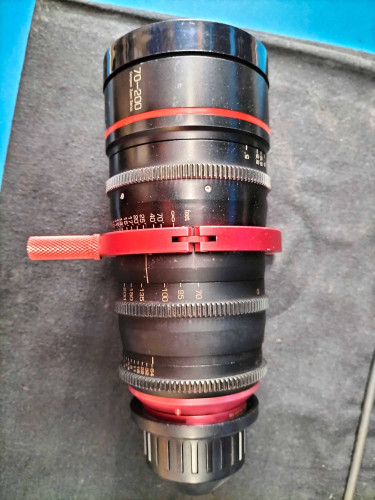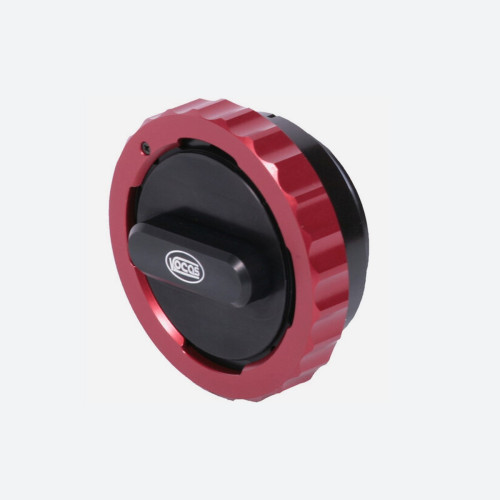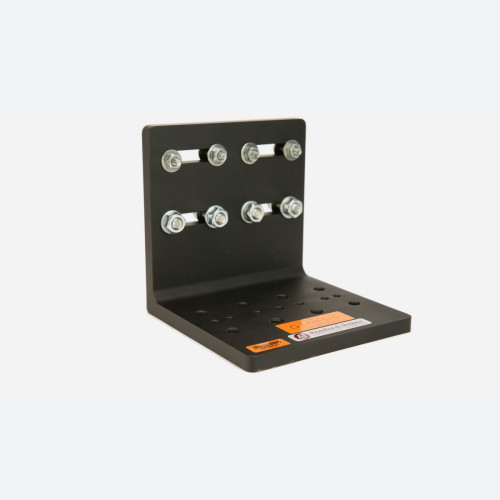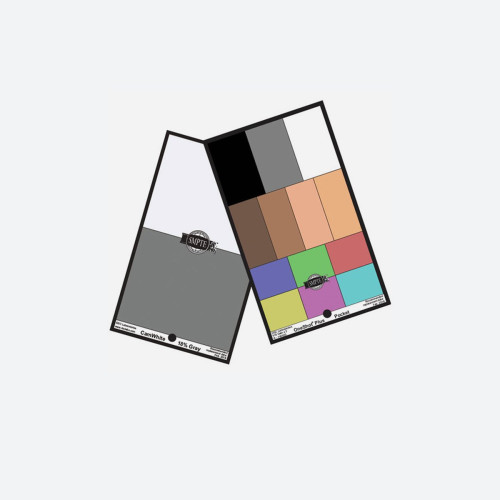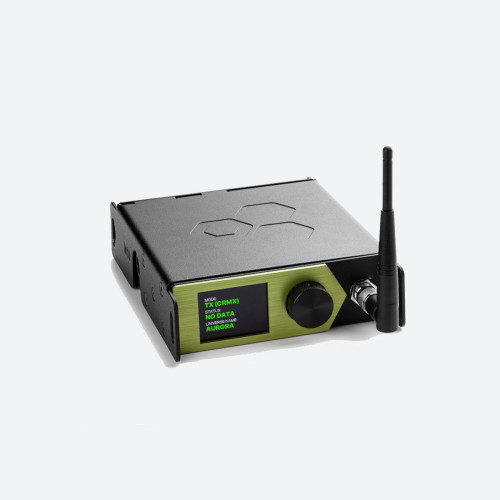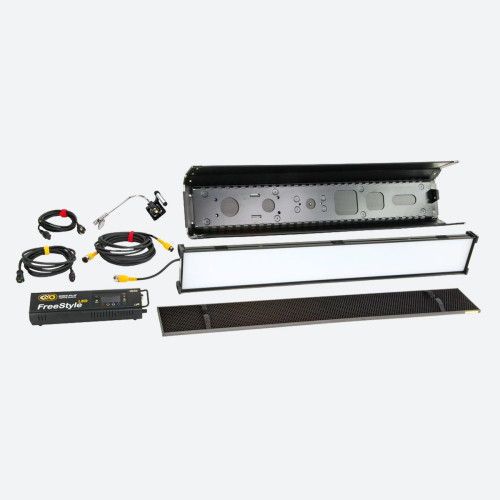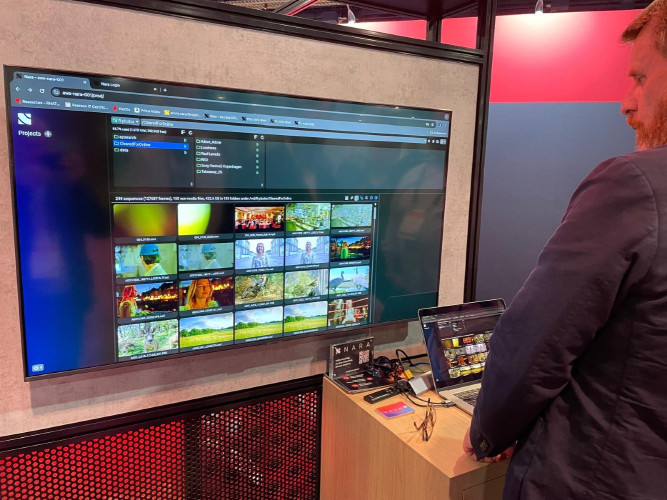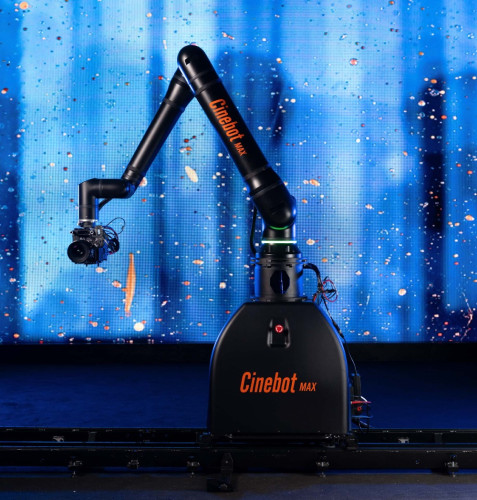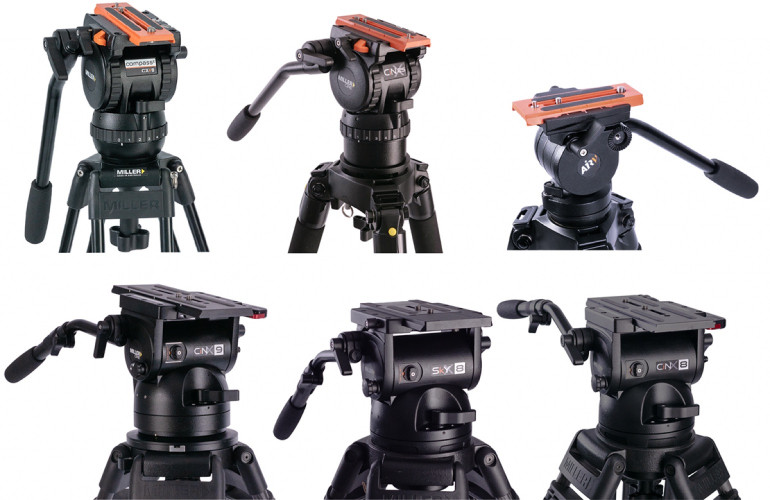Will Strauss gets a grip!

Author: Will Strauss#
Published 1st March 2013
By Will Strauss
Of all the many areas of television technology that tv-bay Magazine covers, you might think that camera support is the one that appears, on the surface at least, to move the slowest.
Take the tripod for example. Fundamentally, the design hasn’t changed for a hundred years. Or how about the dolly? The wheels and track device that Alfred Hitchcock utilized in 1958 for the now legendary dolly zoom (or ‘push pull’) effect in Vertigo is much the same as the one used today (give or take the odd bit of lightweight aluminium I imagine).
At the same time, if you ask a dolly grip what his/her most important tools are the answer is unlikely to be software-related or a magic digital device of some nature. Such is the hugely practical nature of camera support there is a good chance that he (or she) will say a tape measure, chalk, a spirit level and some wooden board.
However, if you think that the pace of camera support technology is slow. You’d be wrong. Very wrong. In fact, if anything, when it comes to camera-related innovation, support is one of the areas where inventions are plentiful whether you’re talking cranes, jibs, dollies and track, fluid heads, steadicam, shoulder mounts or whatever.
Innovations can be as small as a pistol grip for a video-enabled DSLR camera or as big as a 100 ft SuperTechno crane.
Sometimes it’s ergonomic improvements to how the camera is mounted; sometimes it’s where you can stick it (so to speak); while on other occasions it’s simply about providing a faster and less fiddly set-up.
As a result, camera support is very much a hybrid world where ‘homemade’ (or perhaps, ‘set-made’) devices for steadying, moving, mounting, adjusting and relocating the position of the camera exist happily alongside expensively R&D’d innovations from major manufacturers and products developed by small independent practitioners as a solution to a long-term vocational frustration.
The dolly, for one, has been improved, enhanced and tweaked countless times. Some have seats. Some don’t. Some have three legs, some four. The Wally Dolly is good for uneven surfaces for example. The Spider Dolly has floating wheels and can ride on rubber track while the Indie Dolly has a pretty much silent motion and the Microdolly is famed for its quick set-up. And so on.
Which reminds me. As an aside, it is worth noting that camera support and the world of grip often uses the most ridiculous names for its bits of kit. I’m going to list some for you. Are you sitting comfortably?
Cheese plates, Low Boys, Spigots, The Elemack Spyder (aka The Octopus), Apple Boxes, Half Apples, Pancakes, C-Clamps, Baby Pins, Bazookas, Vibration Isolators, Scrims, Mufflers and my own personal favourite the Rolling Beefy Baby.
I haven’t made any of these up. They are all real. Admittedly, some of these things are lighting related (and only the US includes lighting under the heading of 'grip') but you get the idea. Don’t be surprised if they turn up as a question on BBC comedy quiz QI at some point.
Silly naming conventions aside, where is camera support in 2013? Good question.
Here are eleven recent advances that caught my eye:
Zip Shooter – portable surface dolly
Serving as a linear dolly, a curved dolly or an under-sling dolly this tiny wheeled device can hold an iPhone, a DSLR or other camera up to 20lbs in weight and fits in a shoulder bag. The development of ZipShooter was crowd-funded through Kickstarter.
Miller Skyline 70 - levelling fluid head
Developed specifically for lightweight sports, field production and OB rigs this leveling fluid head uses a brand new counterbalance system that provides eight positions of adjustment to enable payloads from 10lbs (4.5kg) to 83lbs (37.5kg) at 125mm C of G (Centre of Gravity) to achieve “perfect balance”.
Dougmon - handheld camera-support system
Developed by camera operator Doug Monroe, the Dougmon reduces wrist and arm fatigue while still allowing smooth, steady shots with DSLRs and small video cameras (up to 5.5 lbs). Unlike shoulder rigs it allows cameras to go wherever your arm can go by utilizing an adjustable friction ball head system centered in the palm of the hand.
Spirit – underwater dolly
Created by Deep Vision, Spirit is a robotic motion control underwater dolly. It can store positions, velocity, acceleration and deceleration using a motion-memory digital remote, negating the need for a manual operator.
Vinten blue5 – fluid head
The Vision blue5 pan and tilt head and tripod system has a higher carrying capacity of 12lbs (5.5kg) to 26lbs (12kg) than the original blue system, making it suitable for larger professional cameras. Also features LF drag technology to enable improved control of the camera at any level of movement.
L’il Mule – motion control dolly
Another innovation brought to market via Kickstarter, the L’il Mule is a motorized trackless dolly developed by Warren Herndon, the man behind the Omni-Tracker video dolly. It can handle a Red Epic and is designed for creating arced or linear camera moves when shooting time lapse or video.
Betz-tools Universal Camera Shoulder Support
A "QuickLock\" plate, the Betz-tools Universal Camera Shoulder Support allows the user to safely and speedily change from handheld camera operation to tripod or Steadicam.
Cartoni Jibo – lightweight jib
A portable three-section jib, the Cartoni Jibo can carry up to 33lbs (15kg) and fits into a lightweight wheeled case. Its developers say that it can be put together or taken apart in under three minutes.
Movietech Scooter Dolly
The Scooter Dolly supports high-end cameras (up to the Arri Alexa) over narrow-gauge tracks made of specially profiled, extruded aluminium. Its key selling point is that it allows the user to easily switch between different cameras.
Libec LX10
Debuted at BVE, the LX10 is a 100mm ball tripod with a maximum payload of 35lbs (16kg). Its USP is that it is 13cm (five inches) taller than its predecessor while retaining its rigidity.
Intel-A-Jib Lite
A successor to the Intel-A-Jib, Matthews Studio Equipment’s Intel-A-Jib Lite is for cameras that weight up to 20lbs (9kg). It has been developed for small spaces and remote places that other jibs cannot reach (and carry weight becomes a factor).
Polecam Starter Pack: PSP
The Polecam system uses Carbon Fibre tubes that slot together to create a reach from 1.5m (5’) to 8m (26’). Whether you want to shoot from the back of a car, on a boat or the edge of a Mountain, the Polecam System gets into tight spots where a traditional crane would be out of the question.
The list goes on.
Granted none of these inventions are likely to win a Nobel Prize. But in their own small way these tweaks and advances (combined with chalk, wood and spirit levels) are between them helping to ensure that camera support technology keeps moving forward (and backwards, and up, and down, and…)



